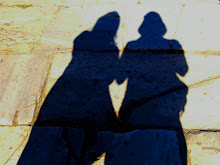 Pointe du Hoc, Normandy, France
Pointe du Hoc, Normandy, FranceDecember 15, 2007
N49°23.762
W000°59.182
Operation Overlord was more than just full scale attack on the beaches of Normandy. At Pointe du Hoc 225 US Army Rangers made an assault on a 30 meter cliff that overlooked both Utah and Omaha beach. It was believed the Germans had large guns mounted at Pointe de Hoc that would cause massive causalities if not destroyed prior to D-Day. The plan was simple… just hours before the assault on Utah and Omaha, the Rangers would land on the beach below the cliffs at low-tide, use rope ladders to scale the huge sea wall (while avoiding enemy fire), capture and destroy the large guns from the Germans, and radio back to command when the job was complete. No problem.
The night before D-Day, the Allied Forces dropped tons of bombs on the areas where the forces would be landing the next day; hopefully forcing some of the Germans out of the area and essentially “softening-up” the beaches prior to the landing. The area around Pointe du Hoc was severely damaged by the bombs the night before; however, the Germans still remained as the Rangers attempted to scale the walls.
 As the Rangers tossed their rope ladders up the cliff, the Germans would cut then down and riddle them with small arms fire, a soldier would fall to his death, and another man would take his place, throwing-up his ladder and begin scaling the wall. Their job was to capture the guns and there was no turning back.
As the Rangers tossed their rope ladders up the cliff, the Germans would cut then down and riddle them with small arms fire, a soldier would fall to his death, and another man would take his place, throwing-up his ladder and begin scaling the wall. Their job was to capture the guns and there was no turning back.After several hours of ferocious combat the US Rangers were able to proudly report that their mission was accomplished, and their brothers, preparing for the attacks on Utah and Omaha beaches, wouldn’t have to worry about the guns at Pointe du Hoc. The Rangers started the day with 225 men and finished with 96.
Today, we had the opportunity to see where the proud Rangers did their work on D-Day. Approximately 30 acres of land surrounding Pointe du Hoc was given to the US Government by France in 1979 and the area remains pretty much the same as it did in 1944. The bomb craters are clearly visible. German bunkers are a bit of a wreck, but they still remain, barbed wire still winds through weeds and mounds of earth, and the massive gun turrets still overlook Omaha to the right and Utah to the left.

We slowly walked through the site, taking our time, looking down the cliff to the sea below, amazed at the bravery and paying respect to the Rangers of Pointe du Hoc. When we were sufficiently frozen, with our scarves wrapped up to our ears, we headed back to the car for a little warmth. We were very happy we took the time to see Pointe du Hoc, another important piece of D-Day history for Americans.
















